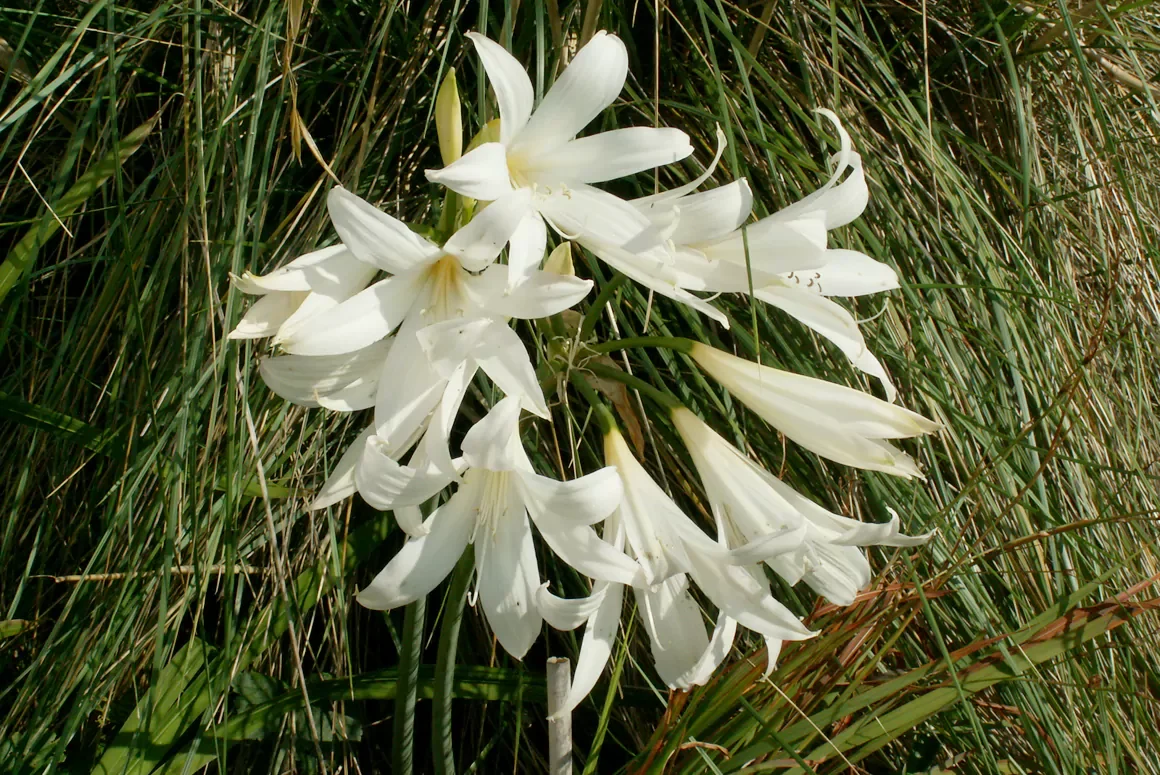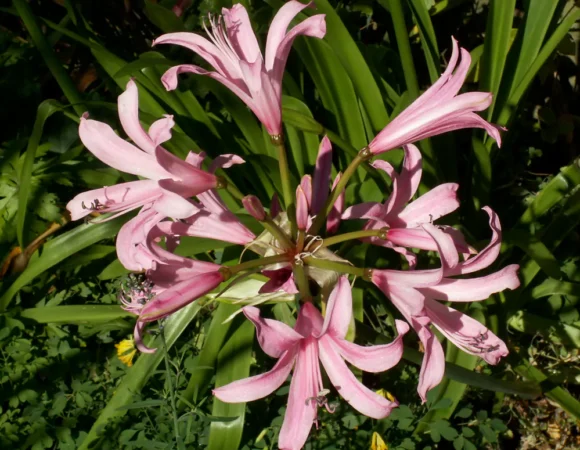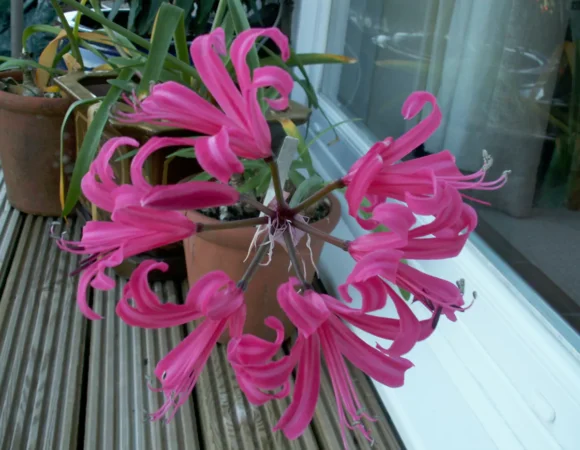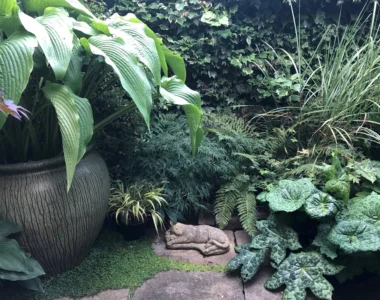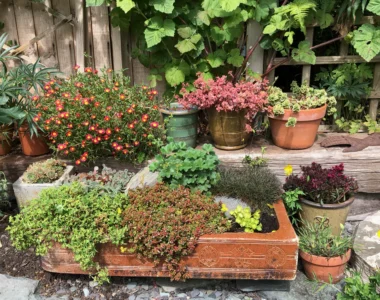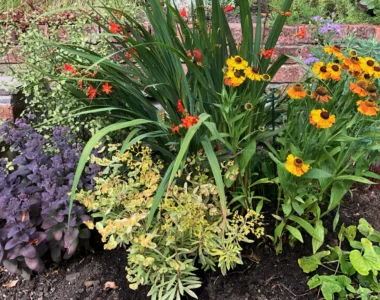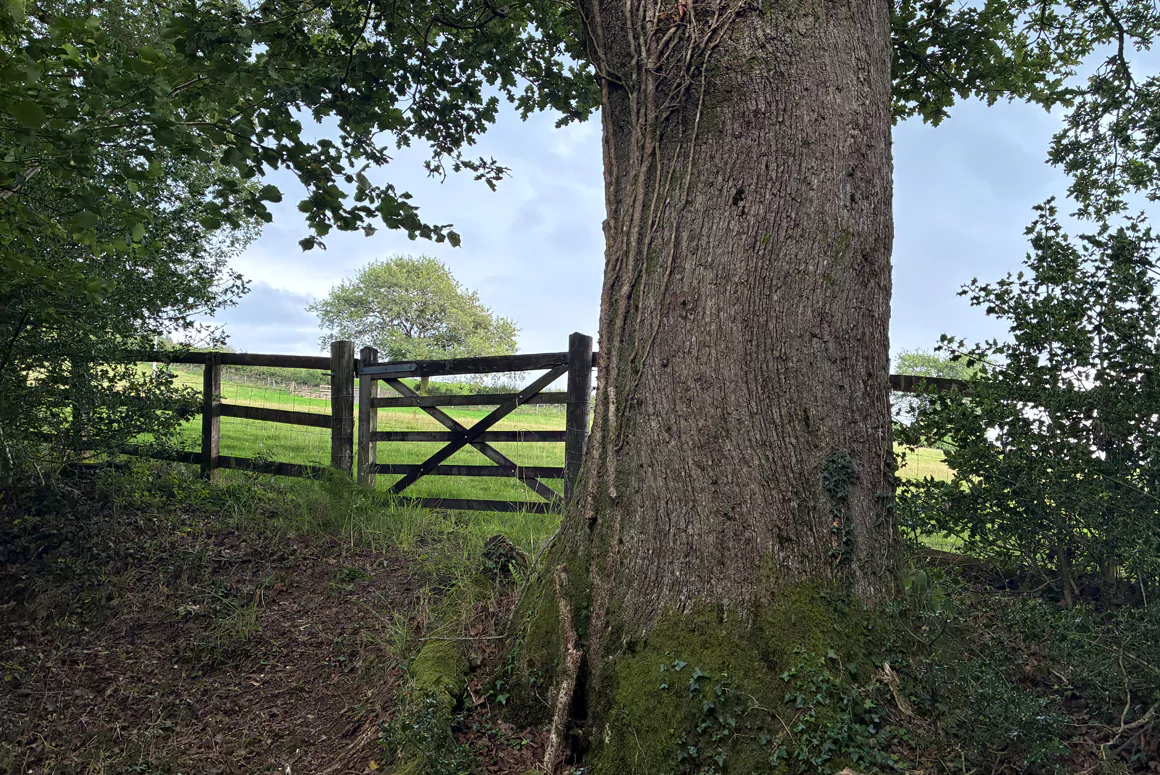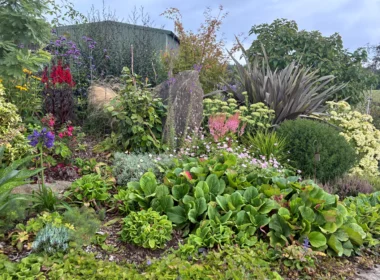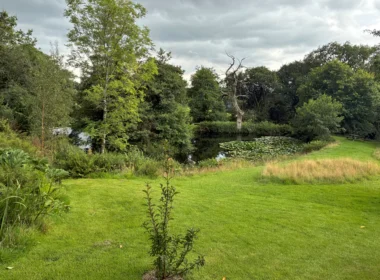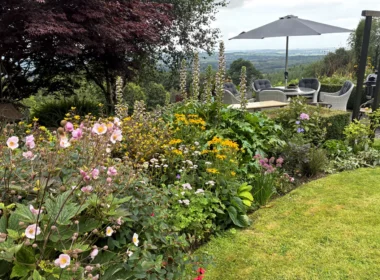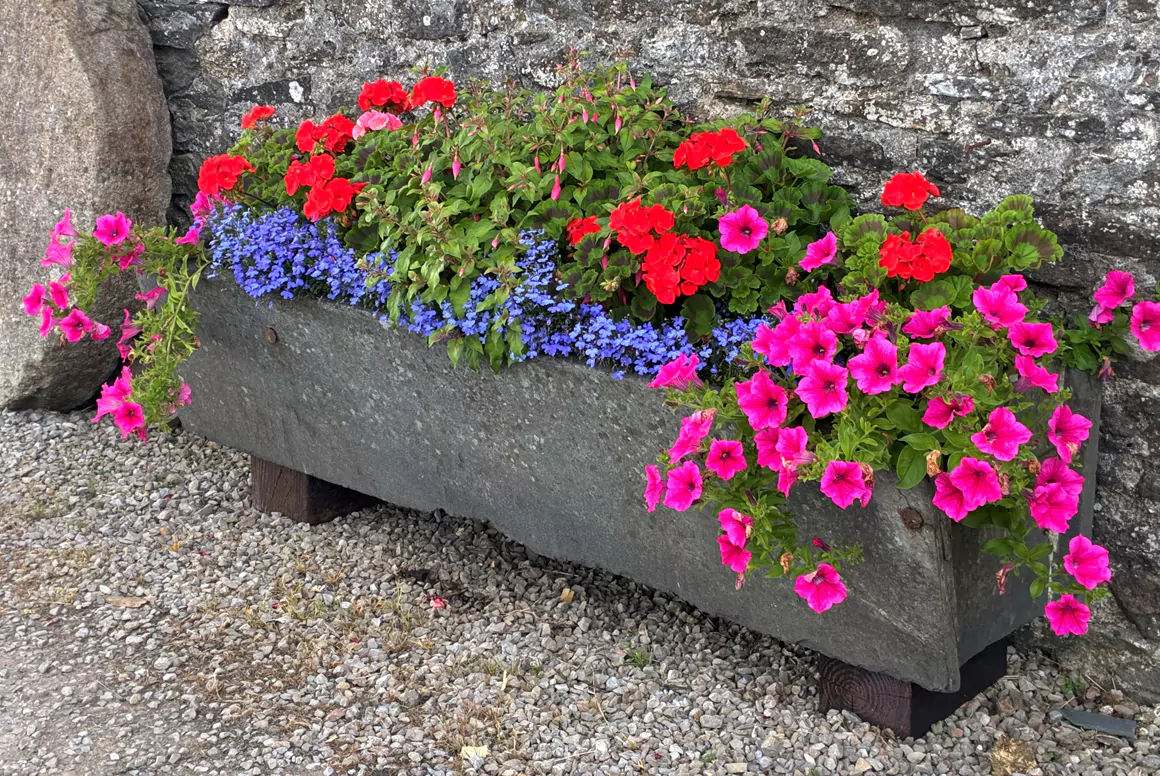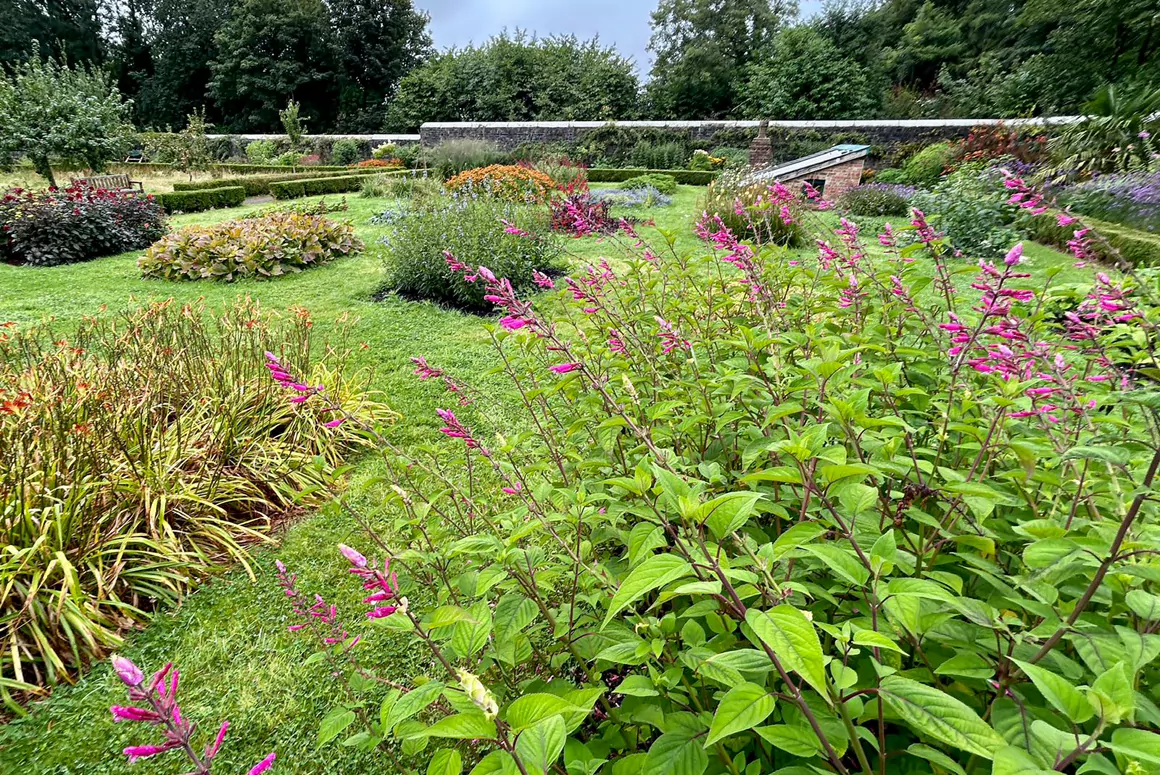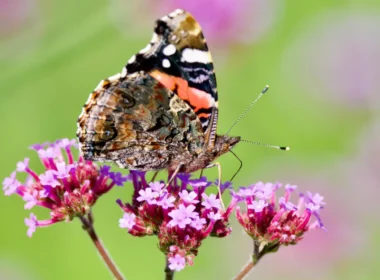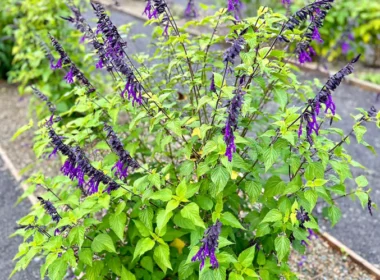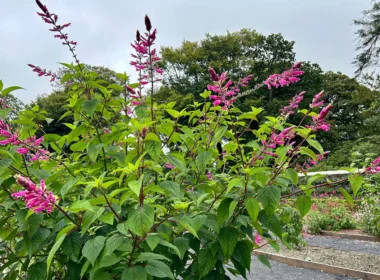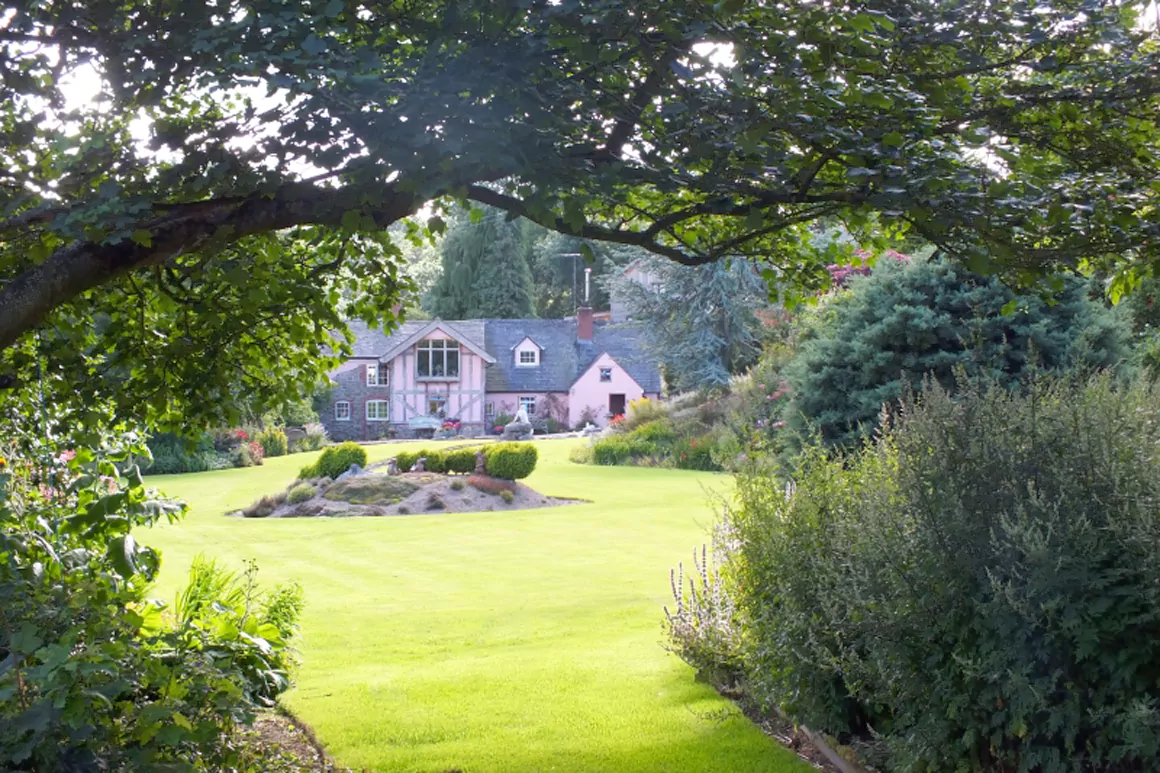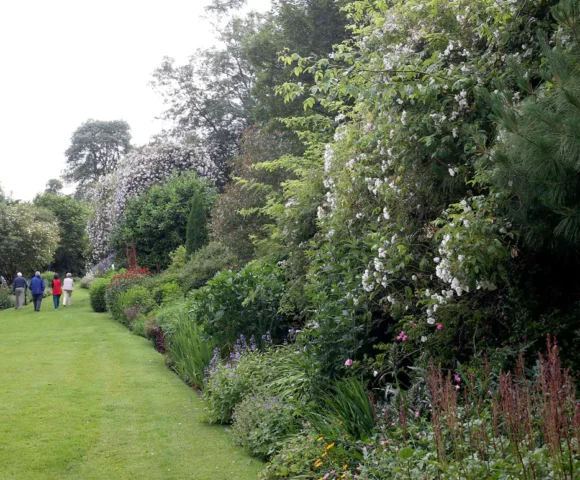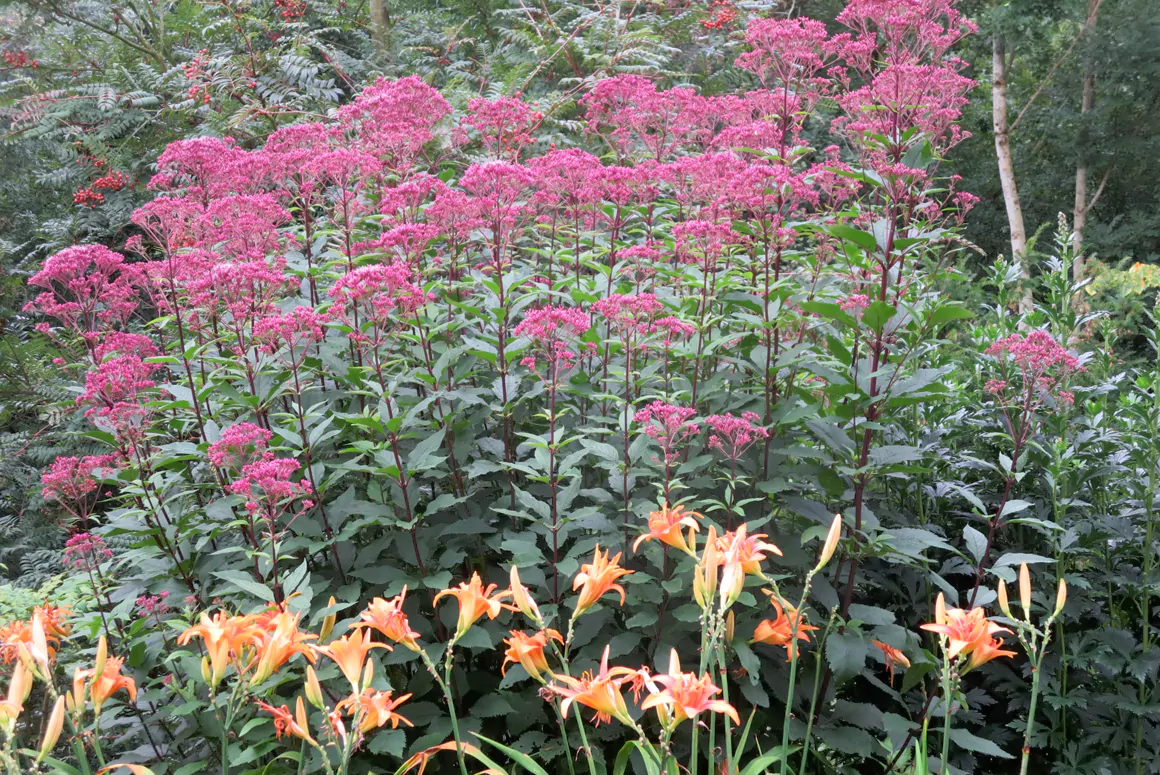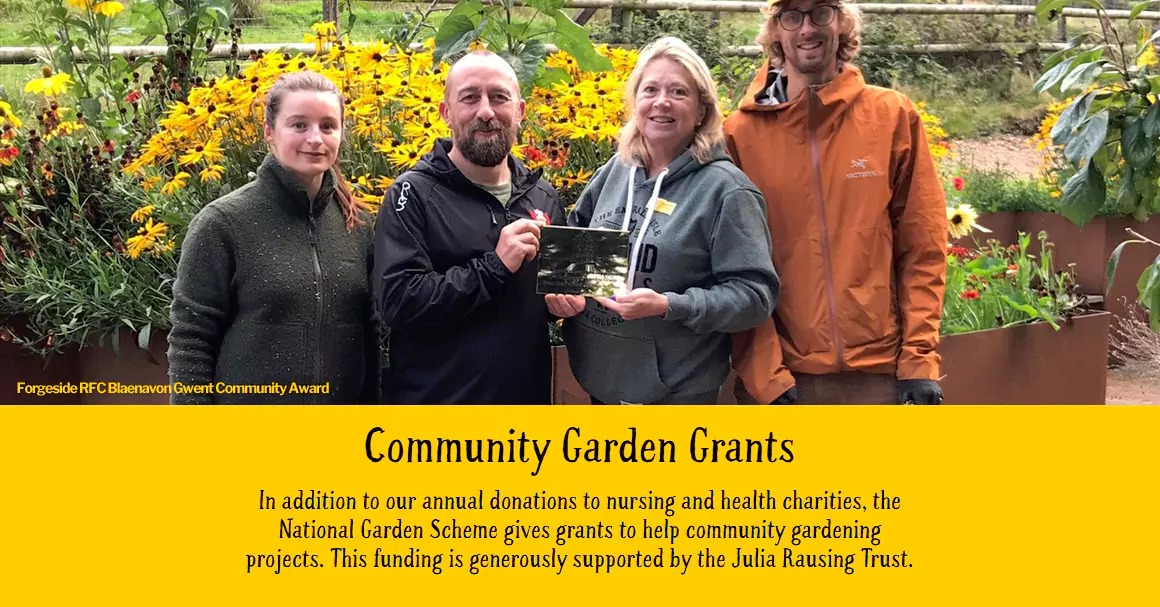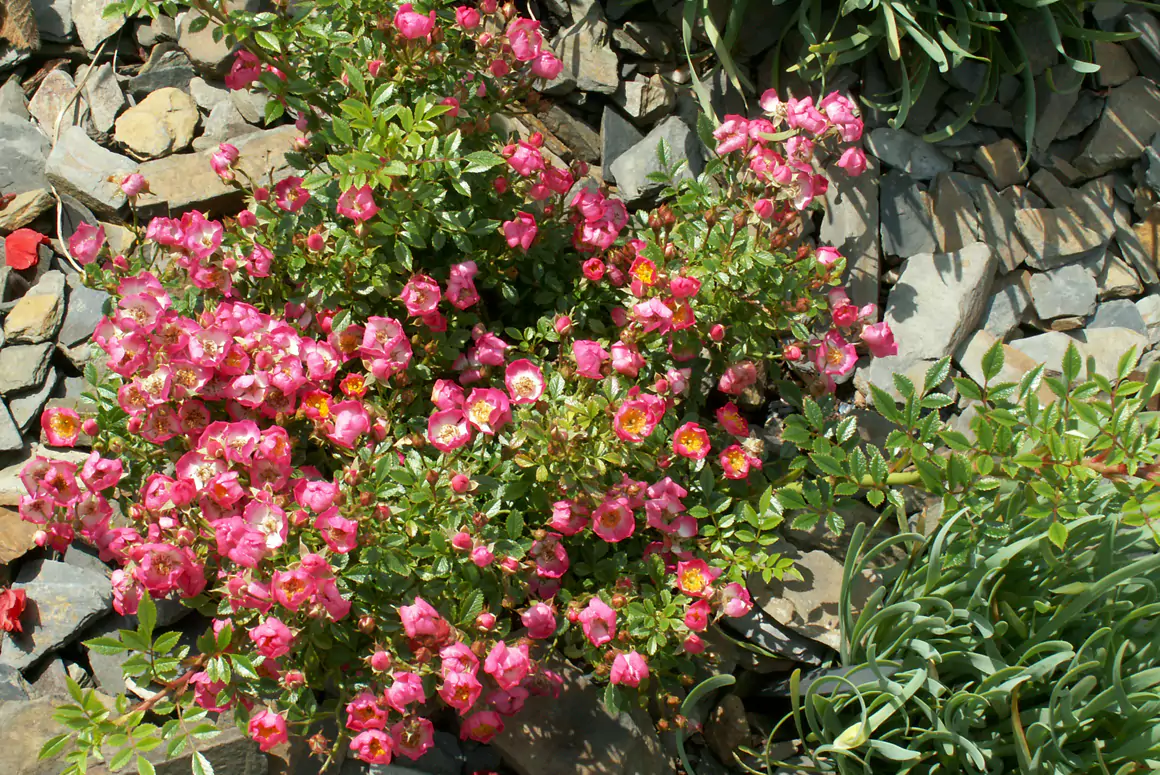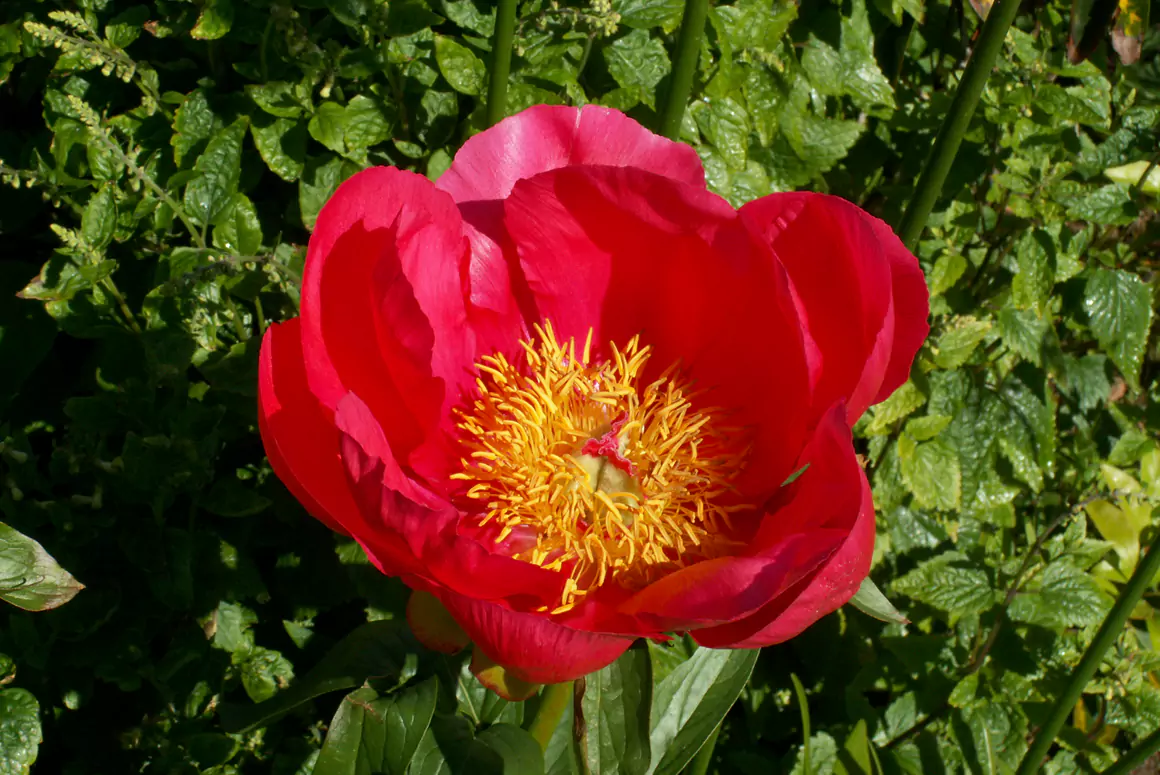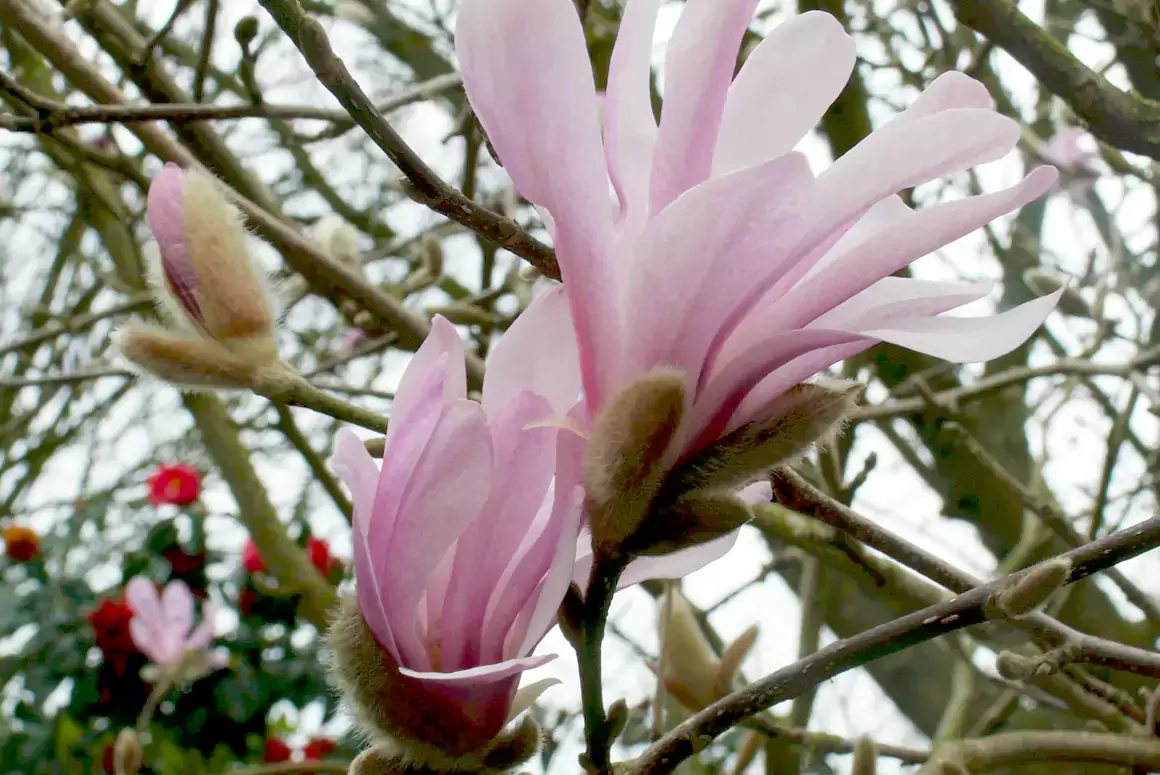At the time of writing we are in the midst of our fourth heatwave of the year with no guarantee that it is the final one. Whilst, like most sun lovers, I revel in blue skies and warm (not hot!) weather, as a gardener it produces many quandaries.
During spring I bought and planted numerous plants, including several expensive magnolias. These now require frequent watering, as do the innumerable pots which contain impulsive buys I was unable to resist. Due to the present concrete like nature of my soil I have not planted since late June. I am aware that my water meter is placing me in substantial debt but the alternative is the likely death of some shrubs, which will be more expensive (and difficult) to replace.
Some plants improve with the years invested in their growth and have evolved with the capacity to flower at a time when others are winding down. Many years ago, upon an August visit to the Scilly Isles, our attention was drawn to a large bright pink patch of colour as we approached St. Martins Isle by boat. Upon landing and now drawn by a delightful fragrance, we discovered a large field which was nearly subsumed with the most exquisite pink flowers. My wife and I were smitten on the spot and have remained so ever since. The plant in question, Amaryllis belladonna, a large and voluptuous South African bulb, whose flowering in our garden is eagerly awaited every autumn. Relatively easy of cultivation, merely requiring a well drained spot in a sunny position to excel. It has historically been categorised as rather tender but survived -12 in ‘the Beast from East’ in my mild? coastal garden. The long stemmed flowers, which give rise to the colloquial name ’naked ladies’, are usually a soft ‘candy floss’ pink but selected forms are sometimes available especially the form ‘Alba’. The strappy leaves appear after flowering and persist through winter until spring’s end.
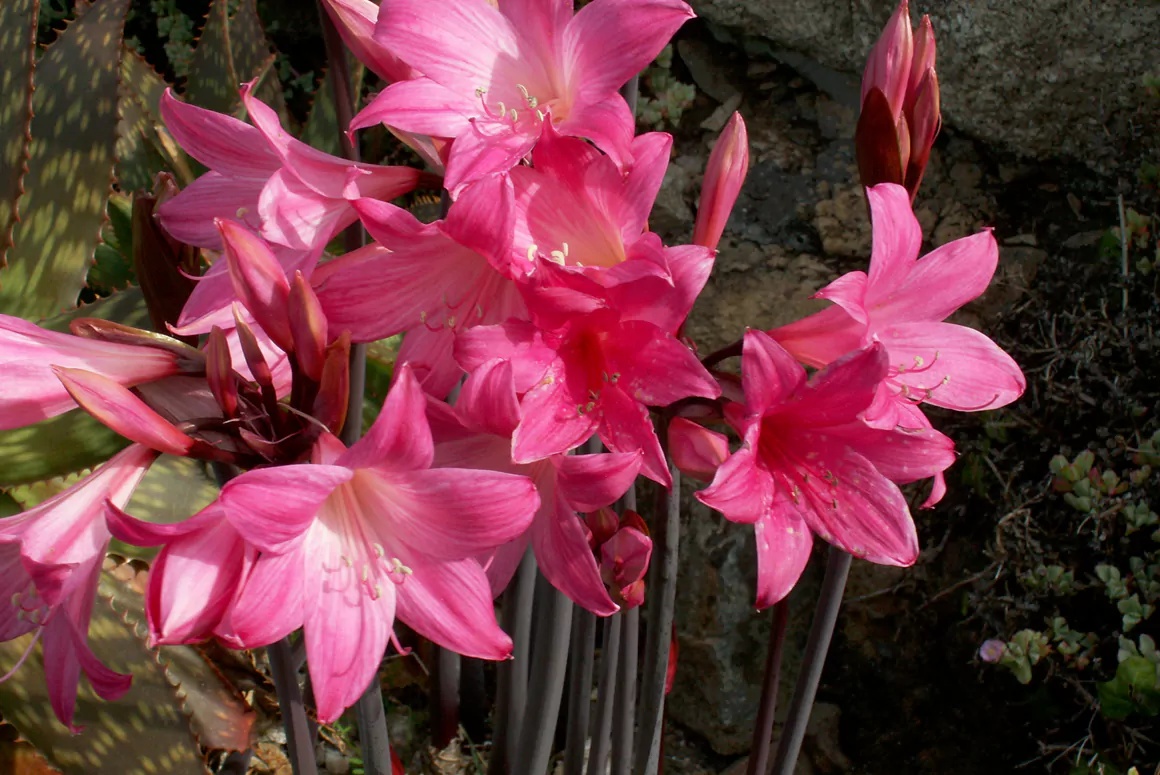
- × Amarine tubergenii 'Aphrodite'
- × Amarine tubergenii ‘Anastasia'
Also family members of Amaryllidacae are Nerines which have a reputation for erratic flowering. In an effort to regularise flowering a cross was made with Amaryllis which produced a resulting success named ‘Amarines’. This cross has produced regular flowering and larger flowers than nerines with a noticeable fragrance. They seem as hardy as either parent and similarly bear winter foliage. I have grown a number of them without problem but my favourite is ’Anastasia’ which has large rosy pink flowers of a good size.
All the aforementioned amaryllids should be planted with the neck of the bulb at ground level which seems to enhance flower production.
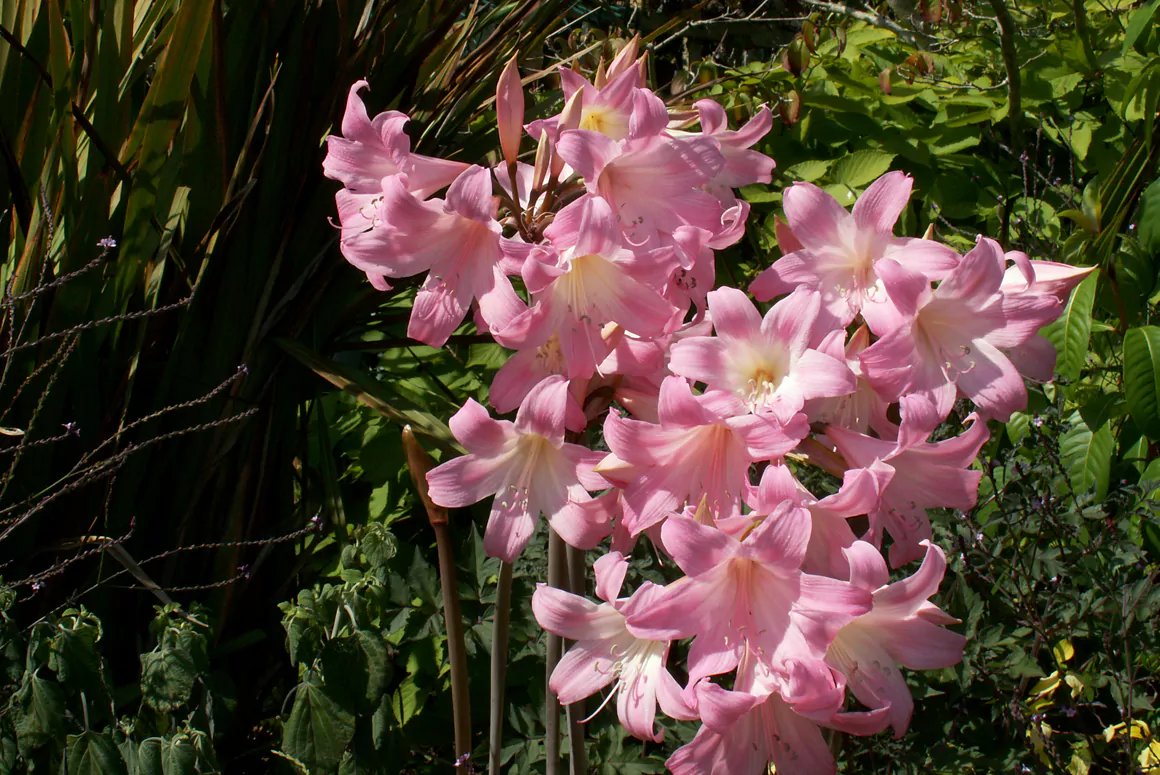
Although high Summer is behind us there are still fabulous late summer and autumn gardens open for the National Garden Scheme.
St Mary’s Place
St Mary’s Place is an interesting secret town garden in Welshpool on two levels. Jill Rock facing the challenges of a steep, stepped site says:
“I’ve been gardening here for 7 years and the main challenge, apart from it being extremely dry, is carrying all the plants, pots and compost up three flights of steps and then all the hedge cuttings back down again! As with most passionate gardeners, my problem is wanting to plant so many different varieties but having to be selective to make a garden which looks attractive and cohesive overall. Sedums, Euphorbias and Acers do well and I have quite a lot of specimens in pots-my favourites being Podophyllum ‘Spotty Dotty’, Acer palmatum ‘Crippsii’ and Hosta ‘Jade Cascade’.”
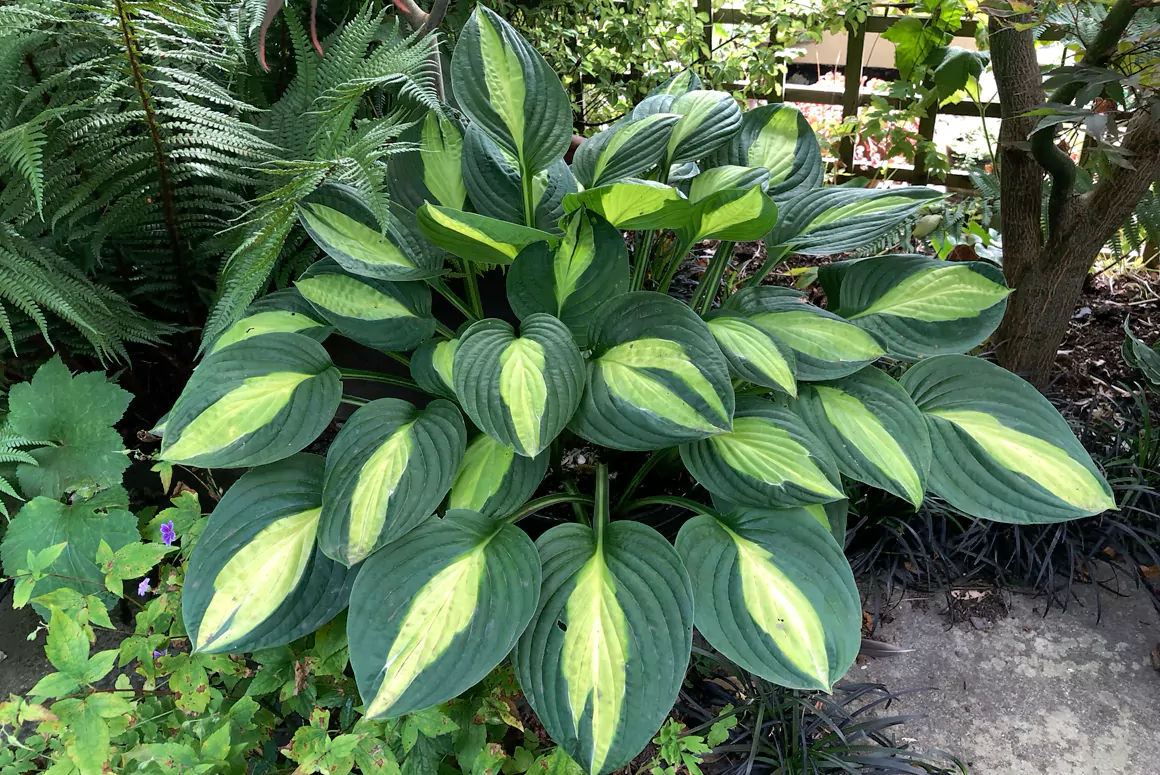
Coed Cae Farm
Coed Cae Farm in Llanharan Mid Glamorgan has panoramic views over the Vale, Bristol Channel and beyond -weather permitting! and offers something for all the family. The gardens cut into a sloping southerly landscape have been developed over 30 years with mixed borders and a small adjacent orchard. A natural spring has been piped to form a water cascade down to a large pond with water lilies flowing out into an Ancient semi natural woodland which can be explored with bridges over the streams. Why not have the children measure the girth to see which is the biggest and oldest oak? Jeremy Liley says:
“There are various shrub borders adjacent to the traditional farm buildings around the yard, and if an old agricultural trough can be planted it is! For vintage machinery enthusiasts, there will be a collection of old tractors and vintage machinery on display around the old farmyard.”
Scolton Manor
Scolton Manor, Bethlehem 6 miles from Haverfordwest comprises 60 acres of park and woodland surrounding the Victorian manor house. Simon Richards, head gardener says:
“Our Welsh collection of 60 plus Salvia varieties is the star of our show but we also have a super old walled garden filled with interest.”
This produces organic produce and flowers and also features a willow arch, pineapple house and perennial borders. There is a Tree Nursery of endangered native trees from West Wales grown from seed for local communities to plant and hopefully flourish for future generations. Additional attractions include the Bee-keeping Centre, sculpture trail, childrens play areas and tearooms.
Images: John Whitehurst
Cwm-Weeg
Returning to Powys south of Newton is Cwm-Weeg. Over almost 4 decades Wolfgang Schaefer and Kinsley George have undertaken major landscaping and gardening projects to develop the 2½ acre garden set within 24 acres of wildflower meadows and woodland with a stream centred around the C15 farmhouse. There are vistas, extensive borders, grottos, sculptures, stumpery, fountain and ponds aiming to translate an older garden vocabulary into an innovative C21 concept. In 2024 they hopefully finished “The Battle of the Bindweed!” Enjoy tea and cake in their large garden Pavillion.
NGS Open Gardens
Welsh Country has two NGS open garden sections. The first ‘Open Gardens’ are gardens that are open on specific days and the ‘Long Term Open Gardens’ which are by appointment only. There is a search facility on each page so simply search for a garden name or an area of Wales (i.e. Swansea) you’d like to visit.


